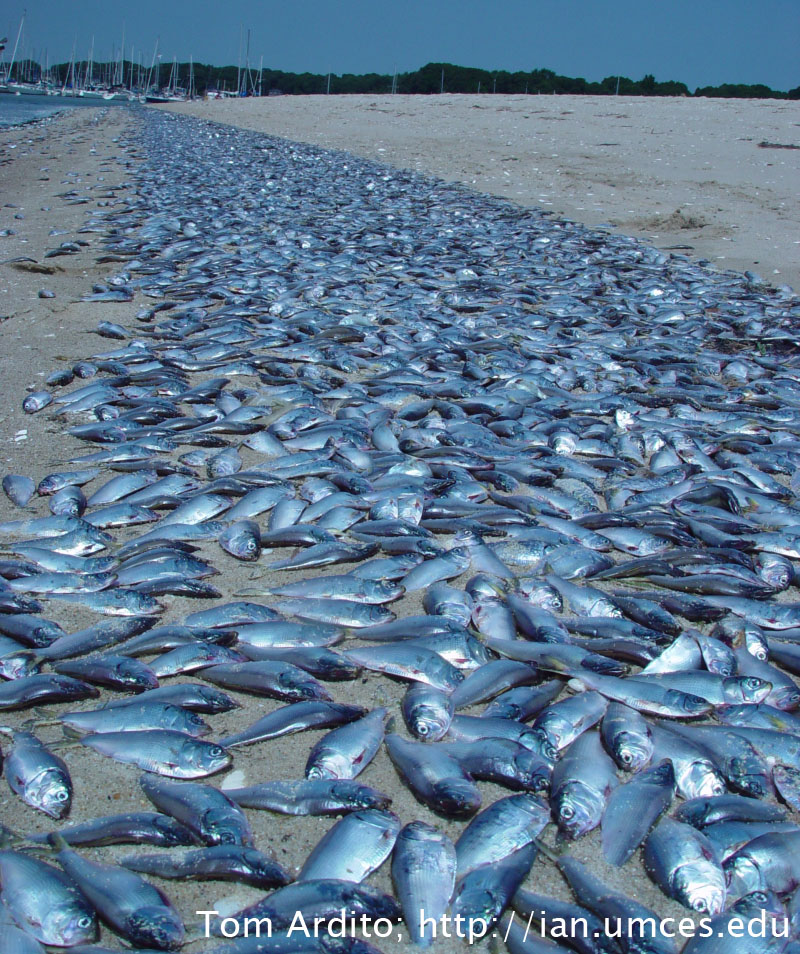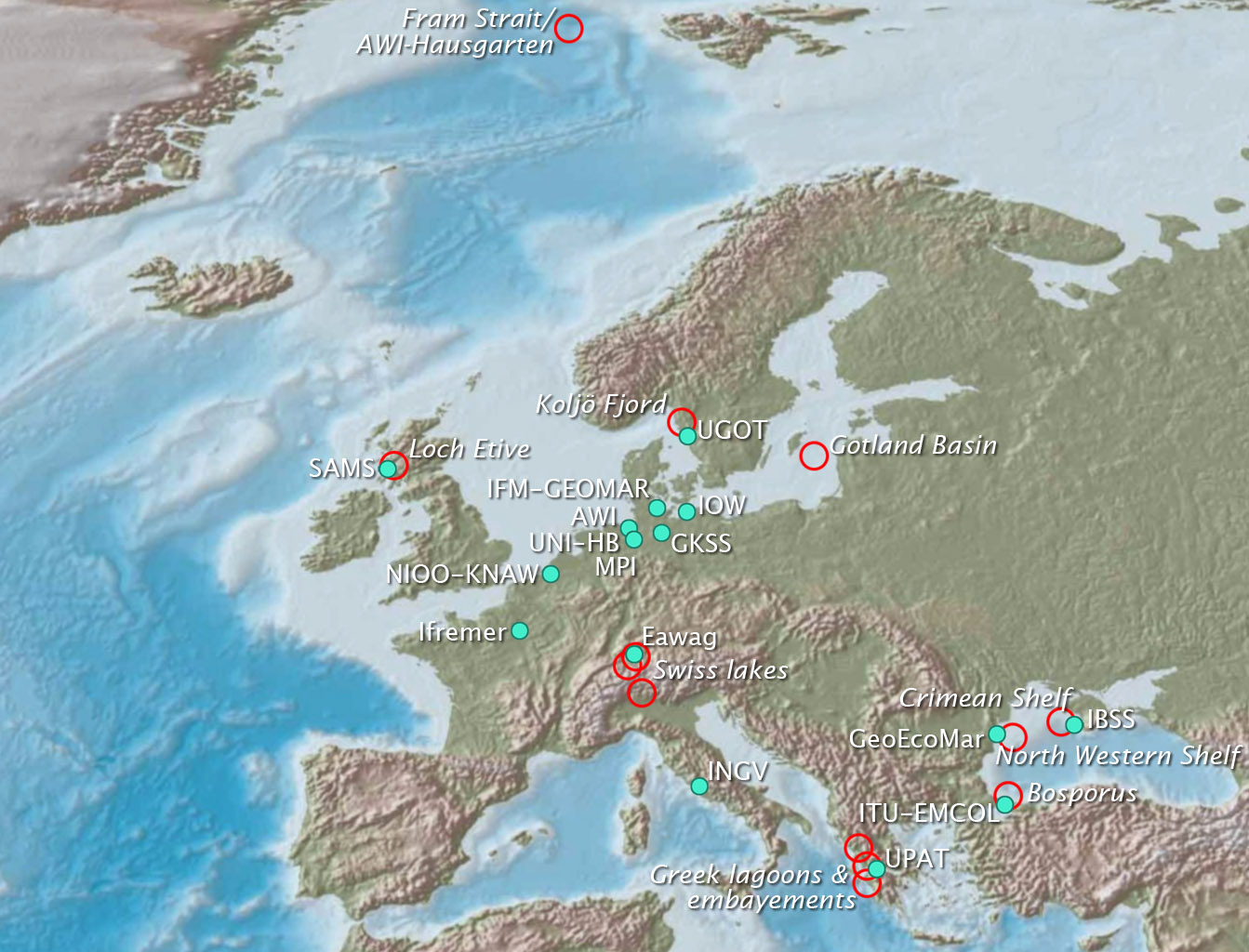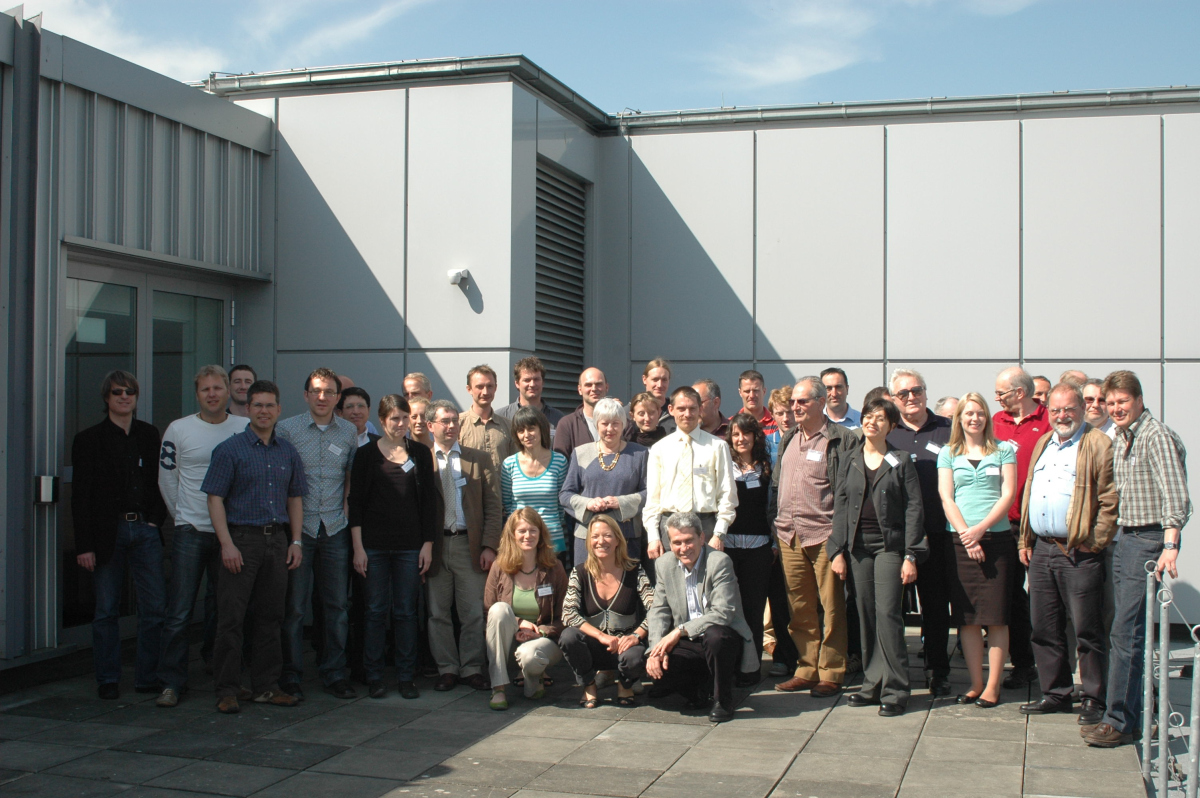Page path:
- Press Office
- Press releases 2009
- 08.06.2009 Global Warming: Oxygen and Aquatic H...
08.06.2009 Global Warming: Oxygen and Aquatic Habitats in a Changing World
Global Warming: Oxygen and Aquatic Habitats in a Changing World
All higher aquatic life depends on oxygen. It is, thus, an alarming finding that hypoxic (low oxygen) conditions in aquatic ecosystems increase in number, duration and extent due to global warming and eutrophication.
On the 1st of April the EU-funded project HYPOX started with the goal to understand causes, temporal dynamics, future trends and consequences of hypoxia (i.e., low oxygen conditions) in aquatic systems.
The alarming observation of propagating “dead zones” where ecosystems collapse due to oxygen depletion as well as the potential worsening effect of climate change call for stronger scientific efforts in this field. Global warming will lead to degassing of oxygen, increased stratification, reduced deep-water circulation and changes in wind patterns affecting transport and mixing. Observed and projected increases in hypoxia are accompanied by enhanced emission of greenhouse gases and losses in biodiversity as well as ecosystem functions and services such as fisheries, aquaculture and tourism. A better understanding of global changes in oxygen depletion requires a global observation system continuously monitoring oxygen and associated parameters at high resolution, including the assessment of physical mixing and of the role of the seafloor in controlling the sensitivity of aquatic systems to oxygen depletion and their recovery after periods of hypoxia.
All higher aquatic life depends on oxygen. It is, thus, an alarming finding that hypoxic (low oxygen) conditions in aquatic ecosystems increase in number, duration and extent due to global warming and eutrophication.
On the 1st of April the EU-funded project HYPOX started with the goal to understand causes, temporal dynamics, future trends and consequences of hypoxia (i.e., low oxygen conditions) in aquatic systems.
The alarming observation of propagating “dead zones” where ecosystems collapse due to oxygen depletion as well as the potential worsening effect of climate change call for stronger scientific efforts in this field. Global warming will lead to degassing of oxygen, increased stratification, reduced deep-water circulation and changes in wind patterns affecting transport and mixing. Observed and projected increases in hypoxia are accompanied by enhanced emission of greenhouse gases and losses in biodiversity as well as ecosystem functions and services such as fisheries, aquaculture and tourism. A better understanding of global changes in oxygen depletion requires a global observation system continuously monitoring oxygen and associated parameters at high resolution, including the assessment of physical mixing and of the role of the seafloor in controlling the sensitivity of aquatic systems to oxygen depletion and their recovery after periods of hypoxia.
Within the project HYPOX, oxygen depletion and associated processes will be monitored through a network of individual observing stations at selected locations distributed over Europe. The selected observation sites cover a broad range of aquatic systems that differ in oxygen status or sensitivity towards change: oxygen-rich open ocean with high sensitivity to global warming (Arctic), semi-enclosed basins with permanent anoxia (Black Sea, Baltic Sea) and seasonally or locally anoxic land-locked systems (fjords, lagoons, lakes). The obtained monitoring results will be combined with information on past hypoxia events and state-of-the-art numerical modeling to predict future hypoxia and its effect on aquatic ecosystems. Thus HYPOX will form a first step towards establishing a sustainable ocean observing network for oxygen monitoring contributng to the currently evolving Global Earth Observation System GEOSS.
In order to get the scientific work started the MPI in Bremen hosted the first general (kick-off) meeting. For three days (15.-17.04.2009) the scientists from all 16 partner institutions of 11 nations jumped right away into lively discussions on all aspects of the project. The scientific program of the meeting was focusing on structure and tasks of the eight Work Packages and on the characteristics of the project sites and work to be carried out there. Inspiring scientific and technological input was provided by talks on hypoxia occurrence and science (Jack Middelburg, NIOO-KNAW), state of the art in long term oxygen measurements (Anders Tengberg, UGOT), and the challenges and benefits of the GEO and GEOSS initiatives (Christoph Waldmann, MARUM). The program was completed by presentations on related projects: the ESONET/EMSO Network of Excellence (Jean Francois Rolin, Ifremer), the HYPER project (Jacob Carstensen, University of Aarhus, Denmark), and the project EuroSITES (Kate Larkin, National Oceanography Centre, Great Britain). The HYPOX project is coordinated by Antje Boetius (Leader Prof. Dr. Antje Boetius) and Felix Janssen (MPI) together with Christoph Waldmann (MARUM).
In order to get the scientific work started the MPI in Bremen hosted the first general (kick-off) meeting. For three days (15.-17.04.2009) the scientists from all 16 partner institutions of 11 nations jumped right away into lively discussions on all aspects of the project. The scientific program of the meeting was focusing on structure and tasks of the eight Work Packages and on the characteristics of the project sites and work to be carried out there. Inspiring scientific and technological input was provided by talks on hypoxia occurrence and science (Jack Middelburg, NIOO-KNAW), state of the art in long term oxygen measurements (Anders Tengberg, UGOT), and the challenges and benefits of the GEO and GEOSS initiatives (Christoph Waldmann, MARUM). The program was completed by presentations on related projects: the ESONET/EMSO Network of Excellence (Jean Francois Rolin, Ifremer), the HYPER project (Jacob Carstensen, University of Aarhus, Denmark), and the project EuroSITES (Kate Larkin, National Oceanography Centre, Great Britain). The HYPOX project is coordinated by Antje Boetius (Leader Prof. Dr. Antje Boetius) and Felix Janssen (MPI) together with Christoph Waldmann (MARUM).
Fish kills can result from hypoxia (source: http://oceanservice.noaa.gov/education/kits/pollution/010nutrients.html)
HYPOX study sites and partner institutions (source: Max Planck Institute for Marine Microbiology)
Kick-off meeting participants at the Max Planck Institute for Marine Microbiology (source: Max Planck Insitute for Marine Microbiology)
More information: www.hypox.net
EU project HYPOX grant agreement No. 226216
Press Contact:
Dr. Manfred Schlösser
[Bitte aktivieren Sie Javascript]
or
Dr. Susanne Borgwardt
[Bitte aktivieren Sie Javascript]
T: +49 (0)421 - 2028-704
Scientific Contact:
Dr. Felix Janssen
[Bitte aktivieren Sie Javascript]
T: +49 (0)421 - 2028-830
Partner Institutions:
Max Planck Institute for Marine Microbiology (MPI), Germany
www.mpi-bremen.de
Center for Marine Environmental Sciences at Bremen University (Marum), Germany
www.rcom.marum.de
Alfred Wegener Institute for Polar and Marine Research (AWI), Germany
www.awi.de
A.O.Kovalevsky Institute of Biology of the Southern Seas (IBSS), Ukraine
www.ibss.iuf.net
Centre for Estuarine and Marine Ecology (NIOO-KNAW), The Netherlands
www.nioo.knaw.nl
French Research Institute for Exploitation of the Sea (Ifremer), France
www.ifremer.fr
Institute for Coastal Research (GKSS), Germany
www.gkss.de/institute/coastal_research
Istanbul Technical University, Eastern Mediterranean Centre for Oceanography and Limnology (ITU-EMCOL), Turkey
www.itu.edu.tr
Leibniz Institute of Marine Sciences at the University of Kiel (IFM-GEOMAR), Germany
www.ifm-geomar.de
Leibniz Institute for Baltic Sea Research, (IOW), Germany
www.io-warnemuende.de
National Institute of Geophysics and Volcanology (INGV), Italy
www.ingv.it
Scottish Association for Marine Science (SAMS), Great Britain
www.sams.ac.uk
Swiss Federal Institute of Aquatic Science and Technology (Eawag), Switzerland
www.eawag.ch
The National Institute of Marine Geology and Geo-ecology of Romania (GeoEcoMar), Romania
www.geoecomar.ro
University of Gothenburg (UGOT), Sweden
www.gu.se
University of Patras (UPAT), Greece
www.chemeng.upatras.gr
EU project HYPOX grant agreement No. 226216
Press Contact:
Dr. Manfred Schlösser
[Bitte aktivieren Sie Javascript]
or
Dr. Susanne Borgwardt
[Bitte aktivieren Sie Javascript]
T: +49 (0)421 - 2028-704
Scientific Contact:
Dr. Felix Janssen
[Bitte aktivieren Sie Javascript]
T: +49 (0)421 - 2028-830
Partner Institutions:
Max Planck Institute for Marine Microbiology (MPI), Germany
www.mpi-bremen.de
Center for Marine Environmental Sciences at Bremen University (Marum), Germany
www.rcom.marum.de
Alfred Wegener Institute for Polar and Marine Research (AWI), Germany
www.awi.de
A.O.Kovalevsky Institute of Biology of the Southern Seas (IBSS), Ukraine
www.ibss.iuf.net
Centre for Estuarine and Marine Ecology (NIOO-KNAW), The Netherlands
www.nioo.knaw.nl
French Research Institute for Exploitation of the Sea (Ifremer), France
www.ifremer.fr
Institute for Coastal Research (GKSS), Germany
www.gkss.de/institute/coastal_research
Istanbul Technical University, Eastern Mediterranean Centre for Oceanography and Limnology (ITU-EMCOL), Turkey
www.itu.edu.tr
Leibniz Institute of Marine Sciences at the University of Kiel (IFM-GEOMAR), Germany
www.ifm-geomar.de
Leibniz Institute for Baltic Sea Research, (IOW), Germany
www.io-warnemuende.de
National Institute of Geophysics and Volcanology (INGV), Italy
www.ingv.it
Scottish Association for Marine Science (SAMS), Great Britain
www.sams.ac.uk
Swiss Federal Institute of Aquatic Science and Technology (Eawag), Switzerland
www.eawag.ch
The National Institute of Marine Geology and Geo-ecology of Romania (GeoEcoMar), Romania
www.geoecomar.ro
University of Gothenburg (UGOT), Sweden
www.gu.se
University of Patras (UPAT), Greece
www.chemeng.upatras.gr



